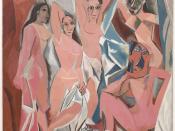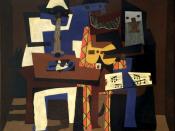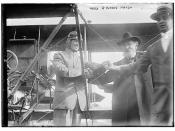The Cubist movement inspired by the Post-impressionist painter Paul Cezzane (1839-1906) was officially introduced by the works of the French Fauvist painter Georges Braque (1882-1963) and Spaniard Pablo Picasso (1881-1973) in the years of 1907-09. The movement rejected the painterly conventions that existed in Renaissance art. The unique analysis of art that the Cubists explored changed the attitudes of reality in art and brought about revolutionary discoveries in visual representation. These discoveries were represented in the analysis of space, form, perspective and the invention of multiplicity.
New spatial relationships of objects on the picture plane were discovered by the cubists and were given an ambiguous quality through the use of forms that overlap and penetrate one another resulting in a kind of unity or interlocking of foreground and background. Pictorially this can seem confusing to the eye but acts to dismantle the traditional representations of three-dimensional form. In a pre-curser to Cubism Cezzane depicts these spatial discoveries in the painting of Monte Sainte Victore 1902-04.
The mountain seems to merge with the sky as parts of the contour of the mountain are left unfinished giving a sense of pictorial illusion as to where the boundaries of the objects lie. This undermining of the illusion of space has been dubbed by art historians as the passage. The passage device also created an abandoning of the traditional conventions of perspective and a centralized view point. A revolutionary discovery that was able to represent objects from multiple view points resulting in the invention of a new visual language. One that would not imitate nature as traditional art had done. In Picassos Toreador Playing a Guitar 1911 multiple view points are explored with the extensive use of line and overlaying to the point where it frees the object of external references or any...


